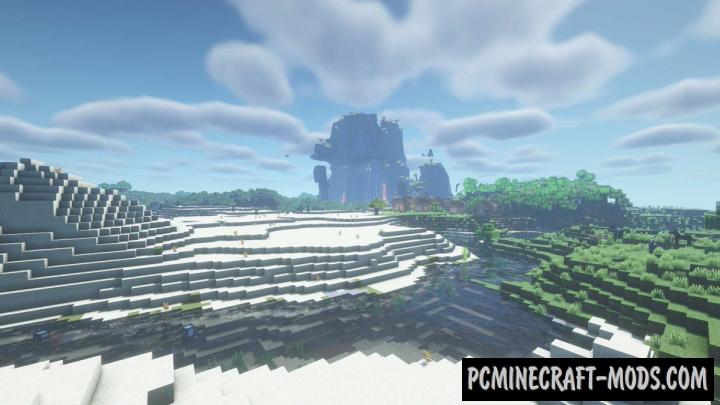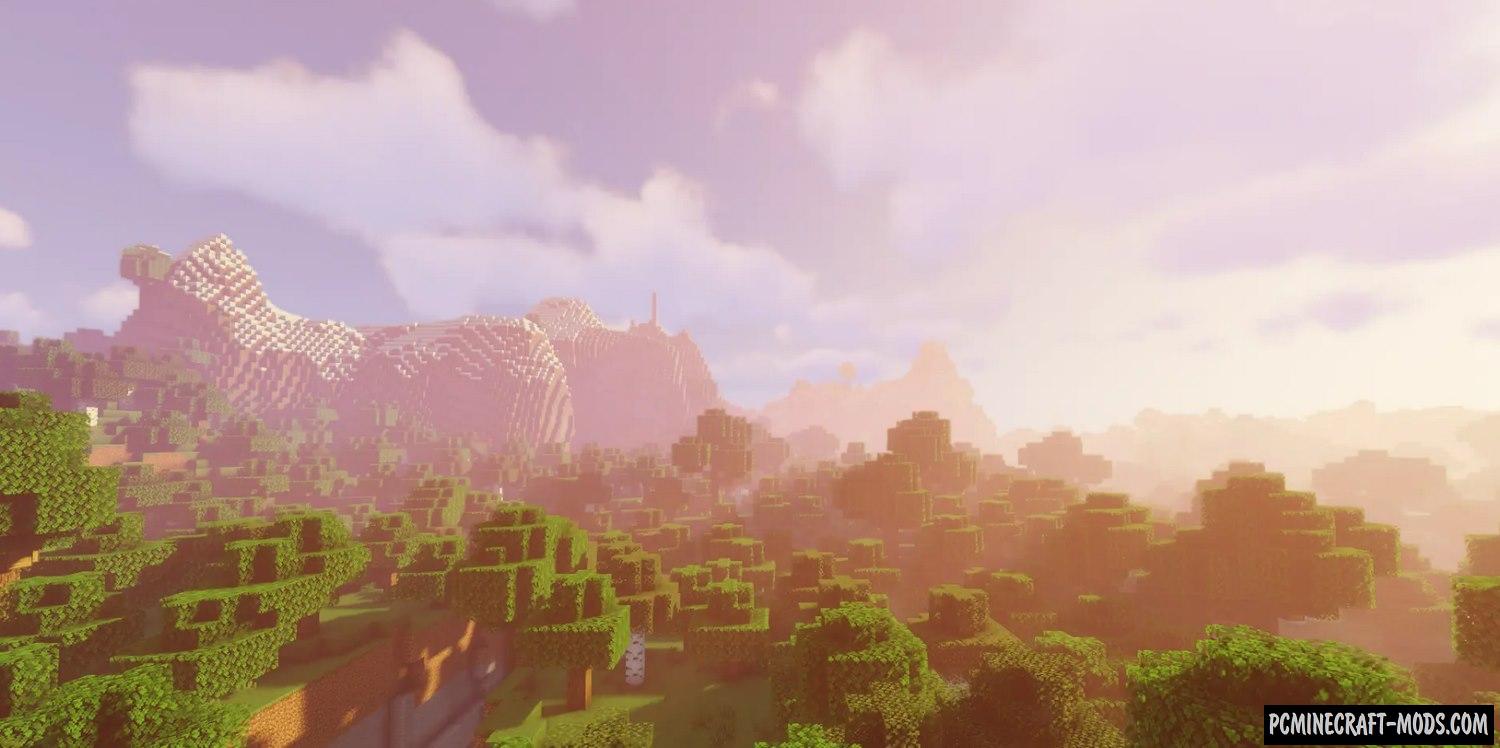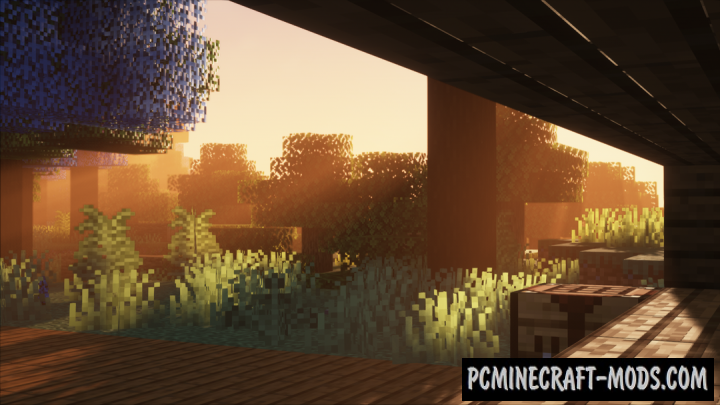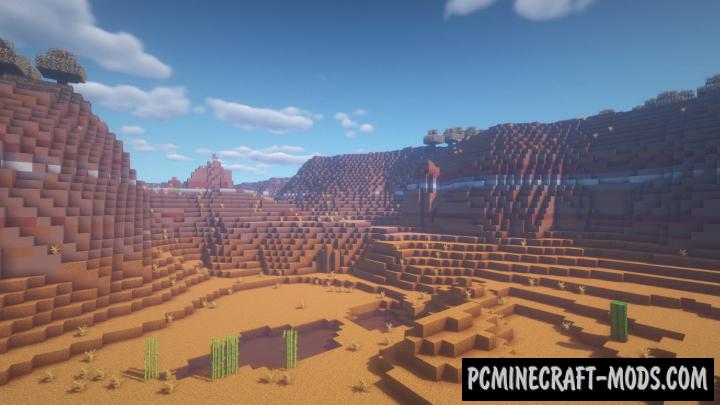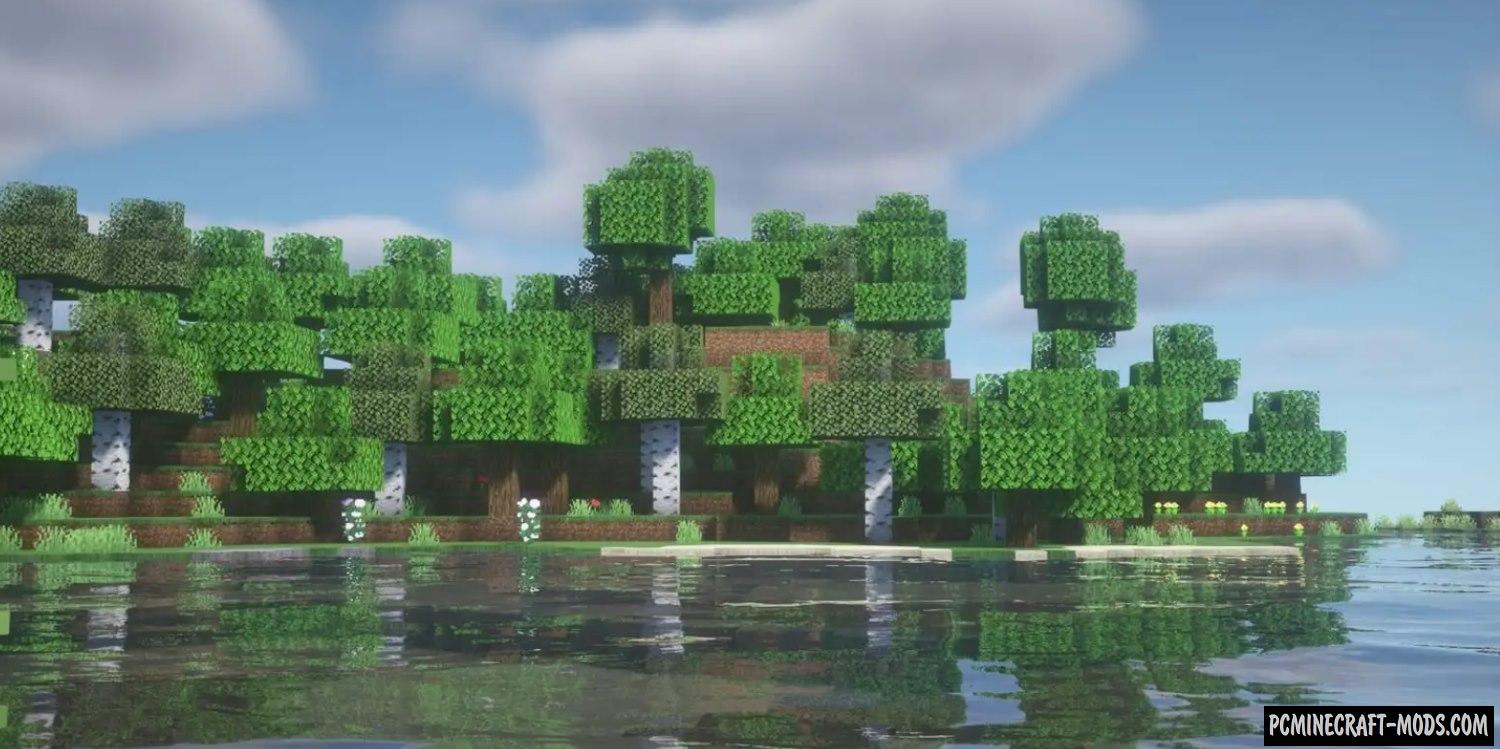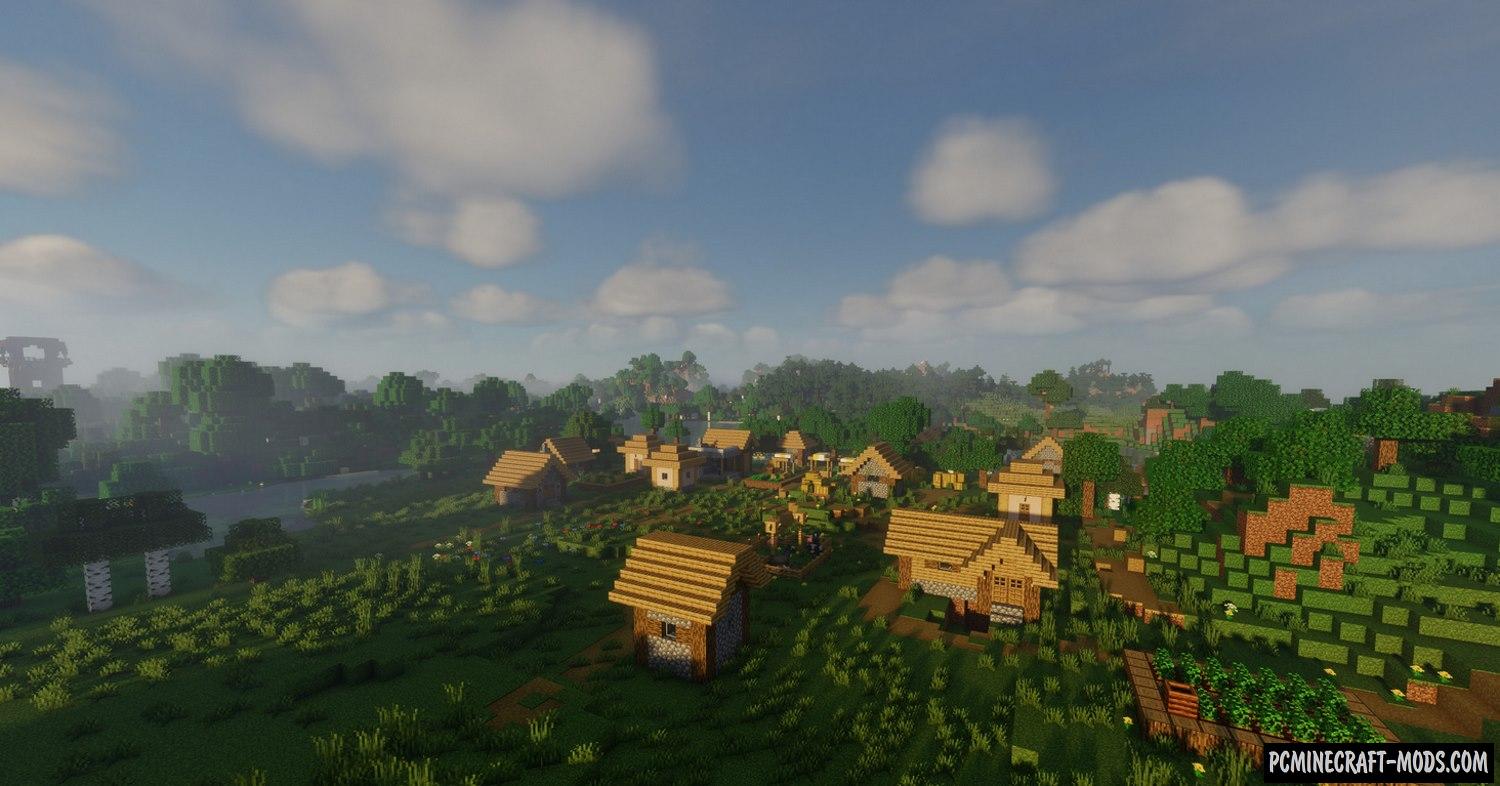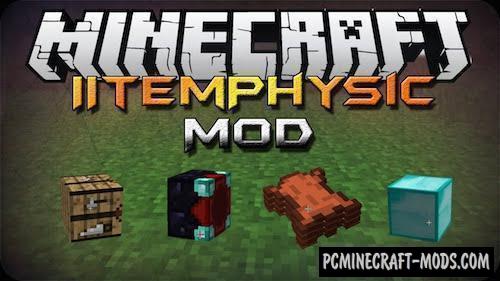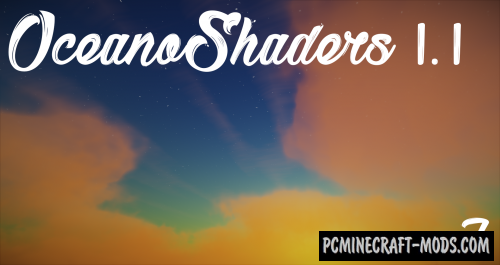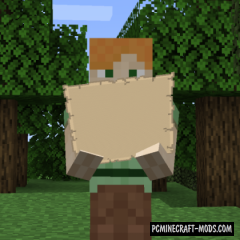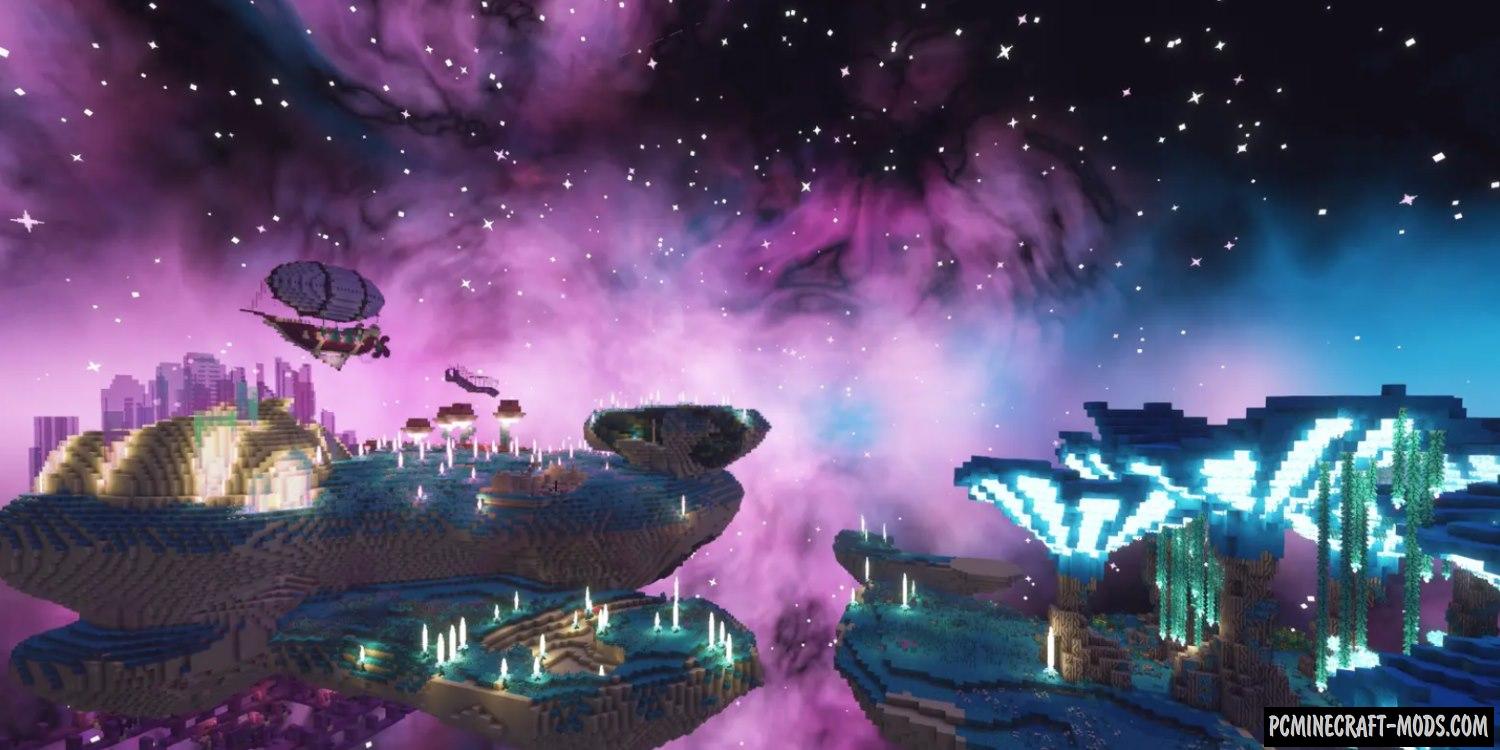
Iris 1.20.4-1.20.1 is one of the first Fabric shaders that work on a simplified and more advanced JSON programming language. In addition to more advanced features than JavaScript, this language is compatible with most optimizing modifications, which gives the player a beautiful picture and FPS boost at the same time.
As you know, Optifine HD is also moving towards the implementation of JSON, but sometimes it takes more time for the author to update his project simultaneously for both JS and JSON. To do this, there are separate optimizers or boosters that can be updated quickly and so you can improve vanilla graffiti almost immediately after updating the game.
In our case, we will consider Sodium, which is a very large project that has hundreds of features to independently update and optimize graphic elements and also work together with additional shaders.
Iris mainly focuses on Sodium, because shader scripts have “Class” parameters and can change dynamically (For example, microelements random in size and speed of movement). In front of the screen, the player can have thousands of such microelements and this loads both the processor and the video card very much. Sodium will be able to divide such elements into clusters and modules to create instead of one queue of thousands of elements – there will be hundreds of queues of only 10 elements, which makes drawing instantaneous and with minimal lags.
Shader Style
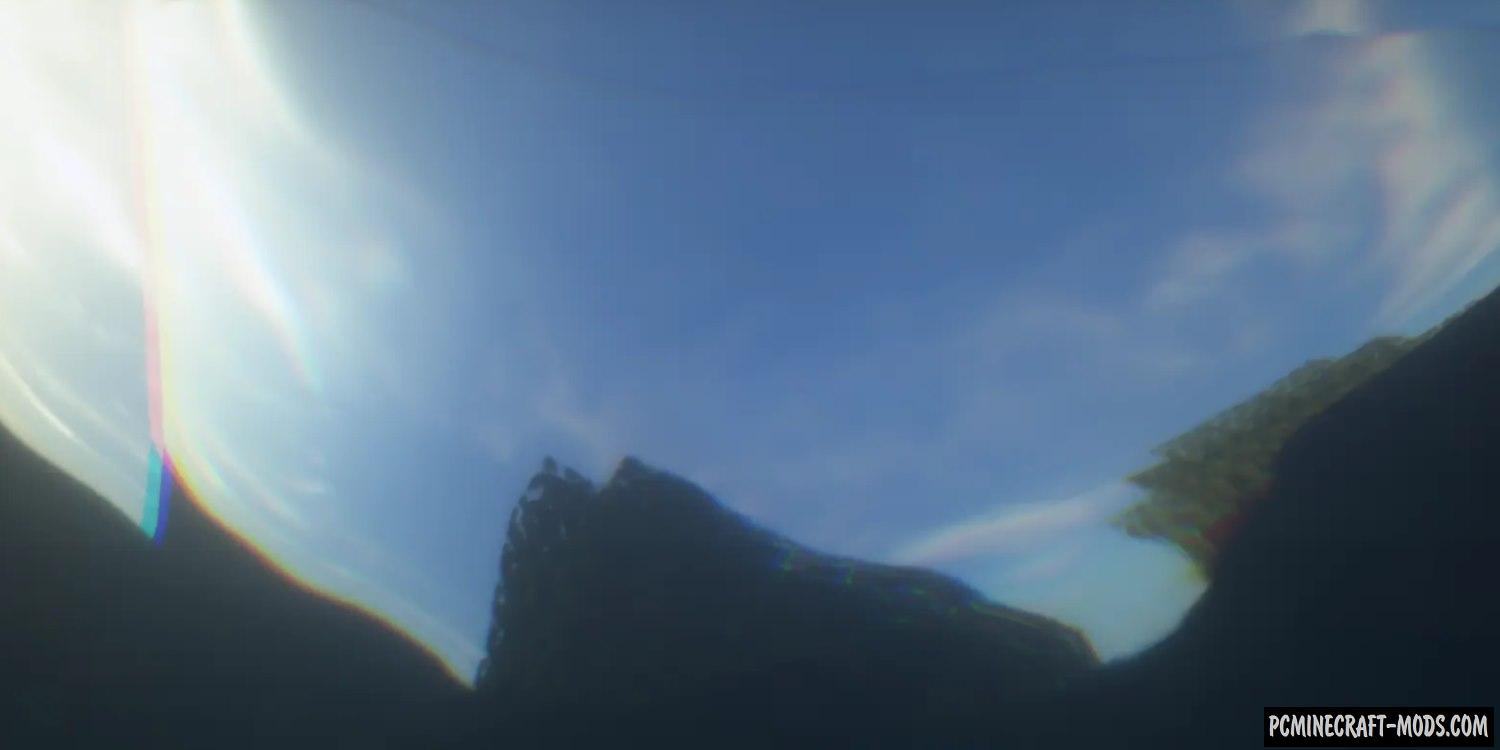
Iris harnesses the full potential of JSON classes, revolutionizing the visual landscape of Minecraft. With this innovative approach, it’s now possible to create new layers that seamlessly interact with existing ones, introducing a level of depth and intricacy never seen before. Experience the magic of beautiful rainbows that redefine realism, as Iris crafts them with a fresh perspective.
Dynamic shadows add another layer of immersion to the game. The sun’s shadow is meticulously detailed and dark, providing a stark contrast to the softer, blurred shadows cast by torches and other dim light sources. This nuanced play of light and shadow enhances the overall visual experience, making each in-game moment more captivating.
Ender World, in particular, stands as a testament to Iris’s capabilities. Prepare to be astonished as you explore this dimension, now adorned with an abundance of 3D clouds and a myriad of captivating microparticles. The attention to detail is unparalleled, creating an atmosphere that captivates any player who ventures into its depths.
Moreover, Iris introduces improved physics for water, elevating aquatic environments to a new level of realism. Dive into the game, and you’ll notice an underwater camera effect that dynamically distorts visible light, giving rise to captivating reverse waves. These subtle yet impactful features enhance the immersive quality of Minecraft, transforming the familiar into a visually stunning and dynamic realm. Explore the vast possibilities Iris has to offer, and let your Minecraft experience transcend the ordinary.
Advantages
- Enhanced Visuals. Shaders like Iris are designed to enhance the visual aspects of Minecraft, introducing realistic lighting, shadows, reflections, and other graphical effects. This can significantly improve the overall aesthetic of the game.
- Realism and Immersion. Shaders contribute to a more immersive gaming experience by creating realistic and dynamic environments. Features such as dynamic lighting and shadows can make the game world feel more alive.
- Customization Options. Many shaders, including Iris Shaders, offer a range of customization options. Players can tweak various settings to achieve their preferred visual style, allowing for a personalized experience.
- Compatibility with Mods. Shaders are generally designed to work alongside other mods and resource packs, providing a seamless integration with additional Minecraft enhancements.
Disadvantages
- Performance Impact. Shaders can have a significant impact on game performance, particularly on lower-end hardware. The advanced graphical effects and calculations may lead to lower frame rates, causing lag or stuttering.
- Compatibility Issues. Some shaders may not be compatible with certain graphics cards, drivers, or specific Minecraft versions. Players may encounter issues, such as graphical glitches or crashes, especially if the shader is not updated regularly.
- Learning Curve. Configuring shaders and understanding their various settings might pose a learning curve for some players. Beginners may find it challenging to achieve the desired visual effects without proper documentation or guides.
- Resource Intensive. Shaders often require more system resources, including a capable graphics card, to run smoothly. Players with older or less powerful hardware may struggle to run the game with shaders enabled.
- Update Delays.Shaders, like any other Minecraft modifications, may experience delays in updates, especially when the game itself undergoes major updates. This can lead to compatibility issues with newer Minecraft versions.
Screenshots
How to install Iris Shaders
- Download and install Sodium or Optifine HD
- Download the shader pack from the section below.
- Sometimes the authors create different simplified or advanced, Bedrock (Minecraft PE) or Java versions, so choose the option that you like or that you think your graphics card can handle.
- Please note that some releases may contain bugs, incompatibilities with resource packs and other graphics addons, and in some cases may cause conflicts within Optifine HD. You can try installing a previous build to fix this.
- Unpack the “Zip” file in the “Shaderpacks” folder.
- This folder is located at the following path:
Mac OS X:
/Users/Your Profile Name/Library/Application Support/minecraft/
Quick way to get there: Click on the desktop and then press the combination of “Command+Shift+G” keys at the same time.
Type ~/Library and press the “Enter” key.
Open the Application Support folder and then MinecraftWindows 11, 10, 8, 7:
C:\Users\Your Profile Name\AppData\Roaming\.minecraft\
Quick way to get there: Press the “Windows” key and the “R” key at the same time.
Type %appdata% and press “Enter” key or click OK. - For GLSL Shaders: Click on “Shaders”, choose the desired Shader and click “Done”
- For OptiFine: In settings, click on “graphics options” -> “Shaders”, choose the desired Shader and click “Done”
- Now it’s loaded and ready to use in the game world!
Manual installation:
Quick installation:
Credits
Created by: IMS21, coderbot


 (15 votes, average: 3.93 out of 5)
(15 votes, average: 3.93 out of 5)